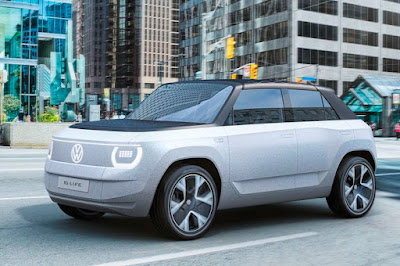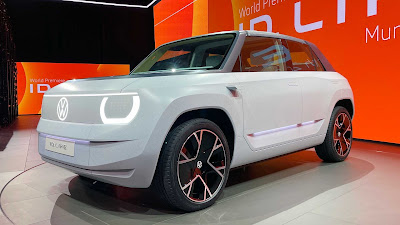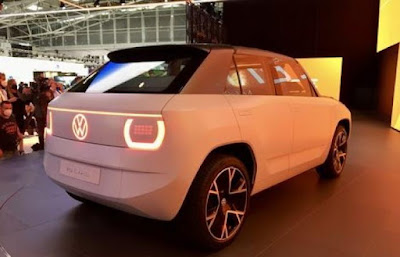Take A Ride Sooner or later electrification is believed to be a trend. Currently emerging new brands that make electric-powered vehicles, especially electric motorcycles. One of them is the Finnish brand, Verge Motorcycles, which is rumored to be launching the Verge TS, which is an electric sports motorbike. This motorcycle will compete in the high-performance electric motorcycle class with the Energica and Zero Motorcycles brands.
 |
| The Verge TS is an electric-powered sports motorbike introduced by the Finnish company Verge Motorcycles. (Picture from: Visordown) |
As quoting from the Greatbiker page, the Verge TS had previously been introduced for the first time at the 2019 EICMA as the prototype in February 2019. It took 32 months for the company to officially launch its electric motorbike. As we know that the Verge TS is a rebranding and to be a new name for mass production of the previous motorcycle brand, RMK E2.
There are no detailed specifications regarding the battery. However, the manufacturer claims that this electric motor has a maximum power of 107 hp and an abundant torque of up to 1,000 Nm. The maximum speed is around 180 kph in under 4 seconds. When the battery is fully charged, the motorbike can cover a distance of 300 km, and 200 km for combined city and out-of-town road us.
 |
| The Verge TS is a rebranding and to be a new name for mass production of the previous motorcycle brand, RMK E2. (Picture from: RideApart) |
In addition to the engine specifications, the Verge TS is interesting because it uses a hubless rear wheel. The rear wheel looks hollow so that it becomes a point more than the design side. Hub holes like this is actually not something new. However, motorcycle manufacturers who launch hubless are rare.
Teemu Saukkio is a designer who created a hubless rear wheel mechanism from his workshop, he developed a hubless rear wheel by attaching a hub mount to an E2 motor (at that time) which was claimed to run very fast.
 |
| The Verge TS has also been pinned with a premium rear suspension of the Ohlins brand monoshock and brake calipers from Brembo. (Picture from: Visordown) |
The wheel mechanism seems to float without being supported by the spokes on the rim and of course futuristic. It is also mentioned that the hubless on the rear wheel is one of the factors that makes the motor have great acceleration. In addition, the Verge TS has also been pinned with a premium rear suspension of the Ohlins brand monoshock and brake calipers from Brembo.
 |
| The Verge TS is claimed has a maximum power of 107 hp and an abundant torque of up to 1,000 Nm. (Picture from: Electrec.co) |
Meanwhile, for rear braking that uses a hubless wheel mechanism, it is impossible to install conventional brakes like an ordinary motorcycle. So, this futuristic style motorcycle uses a rear brake which they call a 'regenerative braking system'. Furthermore, for charging the battery, it is claimed to be faster because it has embedded the Fast Charging system which is their charging standard.
 |
| The Verge TS has a hubless rear wheel mechanism by attaching a hub mount on the motorcycle which was claimed to run very fast. (Picture from: Electrec.co) |
The Finnish company claim the battery of the Verge TS can be fully charged in just 2 to 3 hours, while the battery capacity is still unknown. For performance on the road, the Verge TS electric motor is capable of producing 107 hp (80kW) and a maximum torque of 737 ft-lb. As for the range that can be achieved by the Verge TS is as far as 124 miles or 199 km for use on the highway and 186 miles or equivalent to 299 km in the city.
 It is very impressive the distance that can be covered, for an electric motorbike that has a futuristic design and the use of unusual rear tires. With all the sophistication that is buried into this futuristic motorbike, Verge Motorcycles sells it for $27,713. Are you interested?
It is very impressive the distance that can be covered, for an electric motorbike that has a futuristic design and the use of unusual rear tires. With all the sophistication that is buried into this futuristic motorbike, Verge Motorcycles sells it for $27,713. Are you interested?Kept
spur your adrenaline on the power of the two-wheeled monster and stay
alive with true safety riding. May God will forgive Your sins and so
does the cops..... *** [EKA | FROM VARIOUS SOURCES | VERGE MOTORCYCLES | VISORDOWN | ELECTREC.CO | RIDESAPART ]
Note: This blog can be accessed via your smart phone.




































